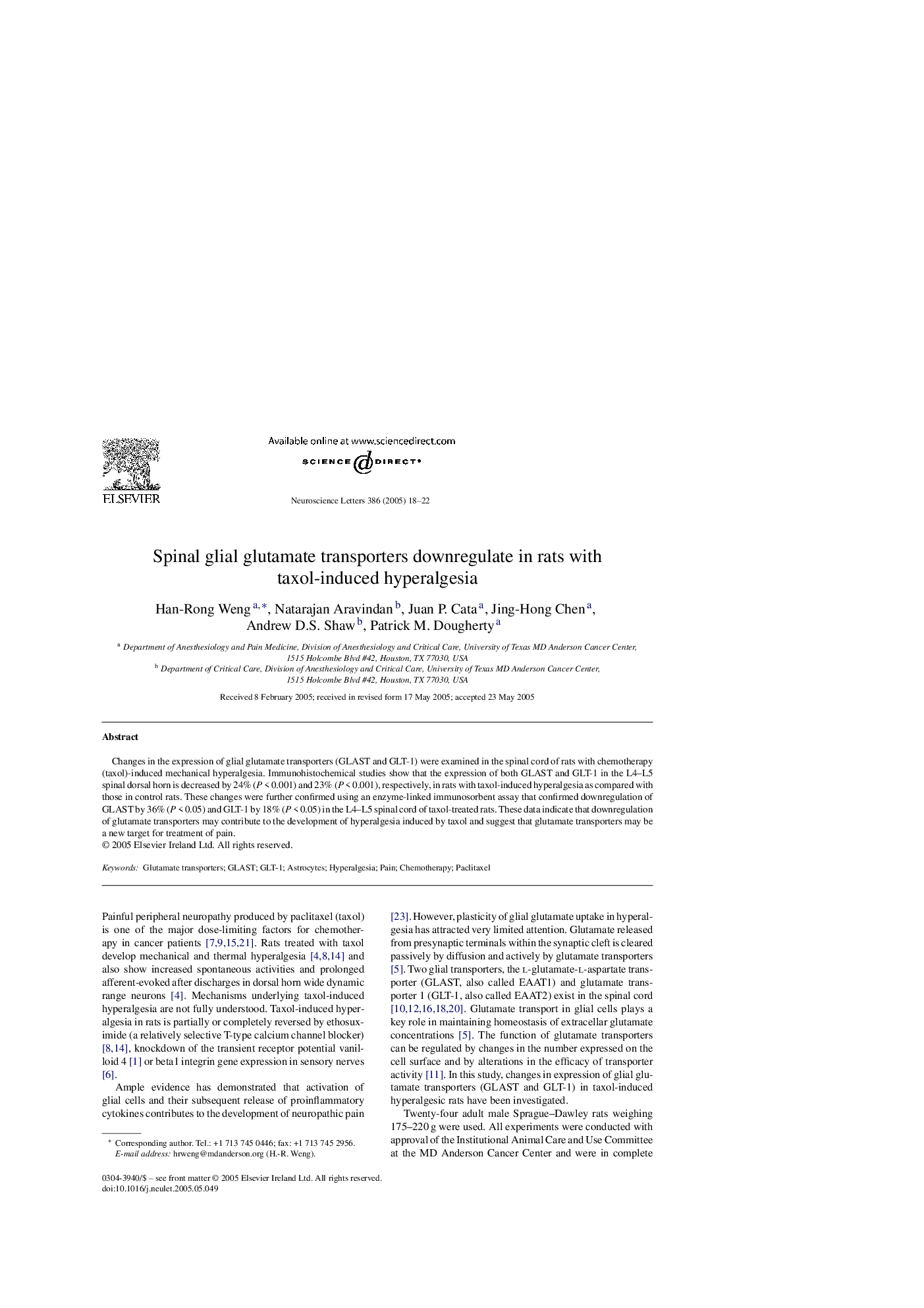| Article ID | Journal | Published Year | Pages | File Type |
|---|---|---|---|---|
| 9429171 | Neuroscience Letters | 2005 | 5 Pages |
Abstract
Changes in the expression of glial glutamate transporters (GLAST and GLT-1) were examined in the spinal cord of rats with chemotherapy (taxol)-induced mechanical hyperalgesia. Immunohistochemical studies show that the expression of both GLAST and GLT-1 in the L4-L5 spinal dorsal horn is decreased by 24% (PÂ <Â 0.001) and 23% (PÂ <Â 0.001), respectively, in rats with taxol-induced hyperalgesia as compared with those in control rats. These changes were further confirmed using an enzyme-linked immunosorbent assay that confirmed downregulation of GLAST by 36% (PÂ <Â 0.05) and GLT-1 by 18% (PÂ <Â 0.05) in the L4-L5 spinal cord of taxol-treated rats. These data indicate that downregulation of glutamate transporters may contribute to the development of hyperalgesia induced by taxol and suggest that glutamate transporters may be a new target for treatment of pain.
Related Topics
Life Sciences
Neuroscience
Neuroscience (General)
Authors
Han-Rong Weng, Natarajan Aravindan, Juan P. Cata, Jing-Hong Chen, Andrew D.S. Shaw, Patrick M. Dougherty,
